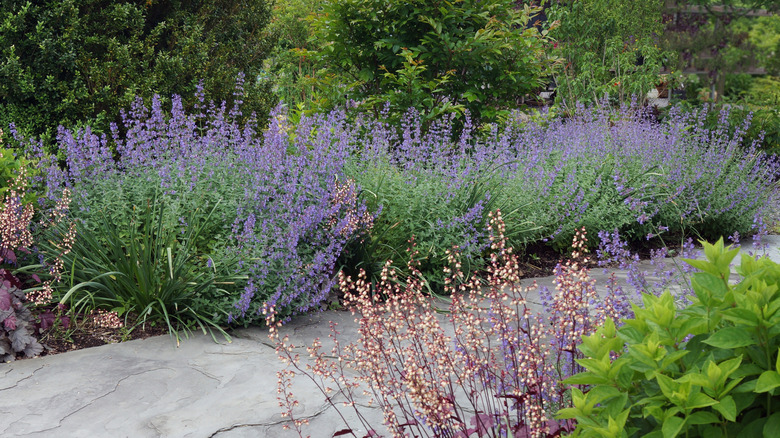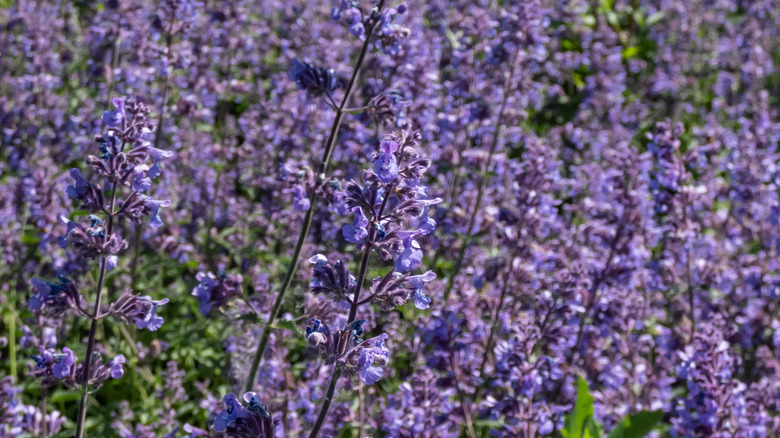The Easy-To-Grow Ground Cover That Can Smother Unwanted Weeds
For some, weeding the garden is a dreaded chore — that thing hanging over their head that they've been bumping down the weekly checklist for longer than they'd care to admit. A layer of organic matter between plants could help, but not everybody loves the look of large swathes of mulch, and figuring out how to keep mulch in place can be a pain. Another solution is to look for living mulch: ground cover with roots robust enough to choke out any weeds. You'll want a hardy choice that won't require too much involved care, not to mention something you'll want to look at.
For a possible living weed prevention solution that ticks multiple boxes, you may need to look no further than Walker's Low catmint (Nepeta x faassenii). This herbaceous perennial — actually a hybrid between N. racemosa and N. nepetella — is a member of the same genus as catnip and even shares some of its attractiveness to cats, though to a lesser degree. Drought resistant and unattractive to deer and rabbits, Walker's Low catmint boasts showy purple blooms that draw pollinators through most of the summer. Just keep in mind when planning your garden that the moniker Walker's Low actually comes from the name of a garden in England where it was first developed, not from its height — it can grow up to 30 inches tall.
How to grow and care for Walker's Low catmint
Considered hardy in USDA Zones 4 through 8, Walker's Low catmint isn't terribly picky about its soil conditions: it will grow in most well-drained soils and will even thrive in dry or drought-stricken settings. Once established, each catmint plant will form clumps that can spread up to 36 inches. It's a full sun lover, but won't mind some shade and may even appreciate it in particularly hot, humid summers.
You can expect to enjoy flowers that bloom all season from Walker's Low catmint. From April to September, the plant will produce profusions of small trumpet-shaped blooms ranging from blue to lavender or purple. Cut them back in mid-summer by about a third after the initial flowers fade to promote both a neater growing habit and re-blooming throughout late summer and fall. Note that as a hybrid, Walker's Low produces only sterile seeds, so you won't have to worry about an invasion of uncontrollable catmint. If you do want to propagate it, you can divide the plants in spring or take three-inch cuttings.
In addition to its ground cover applications, this catmint works well as edging or in containers. With leaves that are fragrant when crushed, it can be a great addition to a sensory garden, as well. Try using it as a companion plant for bee balm (both are beloved of bees, butterflies, and hummingbirds!) or with flowers in shades of yellow for a visual complement.

